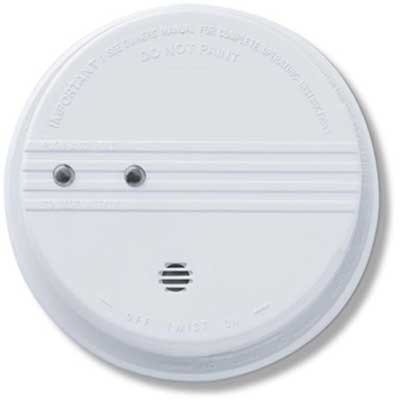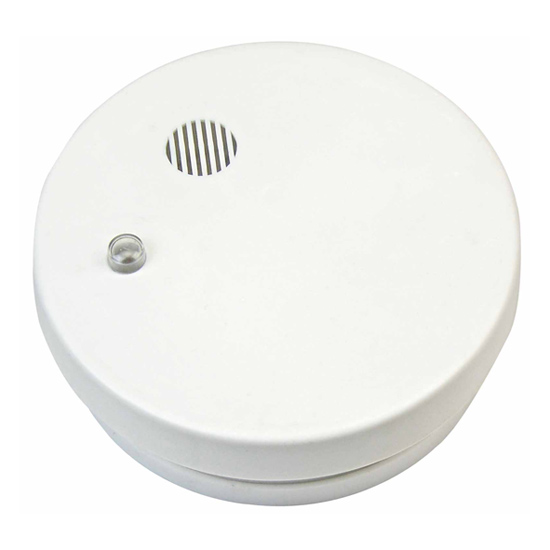 | |||||
|
The Smoke Detector Pole and
Smoke Detectors The Smoke Detector Pole is used in the testing of smoke detectors by pushing on the test button. The problem has always been those smoke detectors that are in hard to reach places, like over a bed or furniture that may be in the way, or ceilings over eight feet like in the newer senior complexes where the ceiling height is around ten feet. Now, with the new Smoke Detector Pole, no more broom handles, ladders, chairs, and expensive smoke blowing cans are necessary. The Smoke Detector Pole is approximately eight inches in length collapsed and extends out to approximately five feet. With an average arm reach of around six foot eight inches you can easily reach a ten foot ceiling and a little beyond. The Smoke Detector Pole is made out of Stainless Steel, has fourteen collapsible sections that extend out in increments of approximately four inches each and has enough side strength to be able to press smoke detector buttons on a side wall. It also has the resistive ability of approximately three to four pounds of force to push smoke detector buttons vertically. When collapsed it will fit in your pocket but was also designed to fit inside the commonly used enclosed clip board as seen here.
The development of the Smoke Detector Pole took over a year from research, designing, testing, revising and testing again until we were satisfied with the product. A provisional Patent was applied for and approved by the Patent Office. The factory delivered the first load in January 2014 and so far many Housing Agencies, Code Enforcement, apartment maintenance personnel and individuals are using the product. Please check out the rest of our web site for more pictures and videos. Residential smoke detectors are installed in almost every home, apartment, condo, townhouse basically everywhere we live. Since they were invented they have saved many lives. There are two main kinds of smoke detectors – ionization and
photoelectric. Both types of smoke detectors effectively sense
smoke and both are required to pass the UL certification. However,
there are key differences in the way they operate and in how they respond
to smoke. There are also many manufactures of smoke detectors and each different one may have a test button that is not the same as another. There are no design standards here and some old models don't even have test buttons, but a lever or other device to test the smoke detector. Smoke Detector Pole was designed by a Housing inspector with many years of doing Housing inspections. His biggest complaint was being able to reach smoke detector test buttons that were in hard to reach places or up on a ten foot ceiling. Many of the new senior complexes, where there are a lot of Housing tenants, have ten foot ceilings making it hard to test the smoke detectors. Usually he would ask the tenant to borrow a broom, a mop, or even a walking cane to be able to reach them. In some cases when it was a vacant unit, there was no broom, stick or cane to use. One problem was that a lot of smoke detectors have a small rounded button and trying to test one with the rounded tip of a broom was very difficult. Another common smoke detector has a recessed red button that requires a small object to test it. Some inspectors use the smoke spray can. These cans once used up must be replaced at more cost. They are bulky to carry around and when a high smoke detector placement is found, they must be attached to a pole of some kind, making it more difficult to use. Maintenance men will usually carry a ladder around with them to reach the high place smoke detectors. This is no longer necessary now that the Smoke Detector Pole is available. The inspector scoured the Internet looking for some type of extendable pole that he could easily carry with him to use in the daily task of testing smoke detectors. After having no success on the Internet he decided to design his own, and then looked for someone to manufacture it. The result is an extendable pole with a small footprint that will fit in a standard enclosed clip board that was used by his agency. He designed the tip of the pole to rotate and have an exact indentation on the tip that will fit over the rounded button on most smoke detectors. The width of the tip is also designed to fit into the smoke detectors that have the recessed red button. The entire device is made from Stainless Steel for strength and durability. The rod extends fully to approximately five feet, giving the ability for an average height inspector to reach almost twelve feet. The prototype was put though hundreds of inspections with great success.
| |||||




